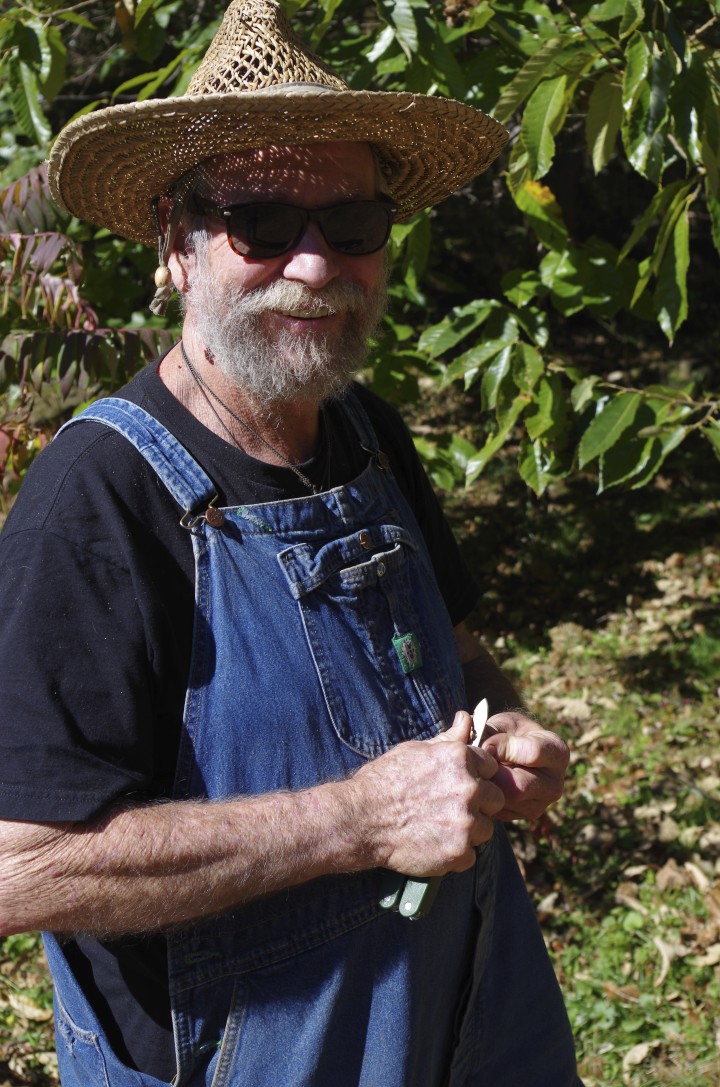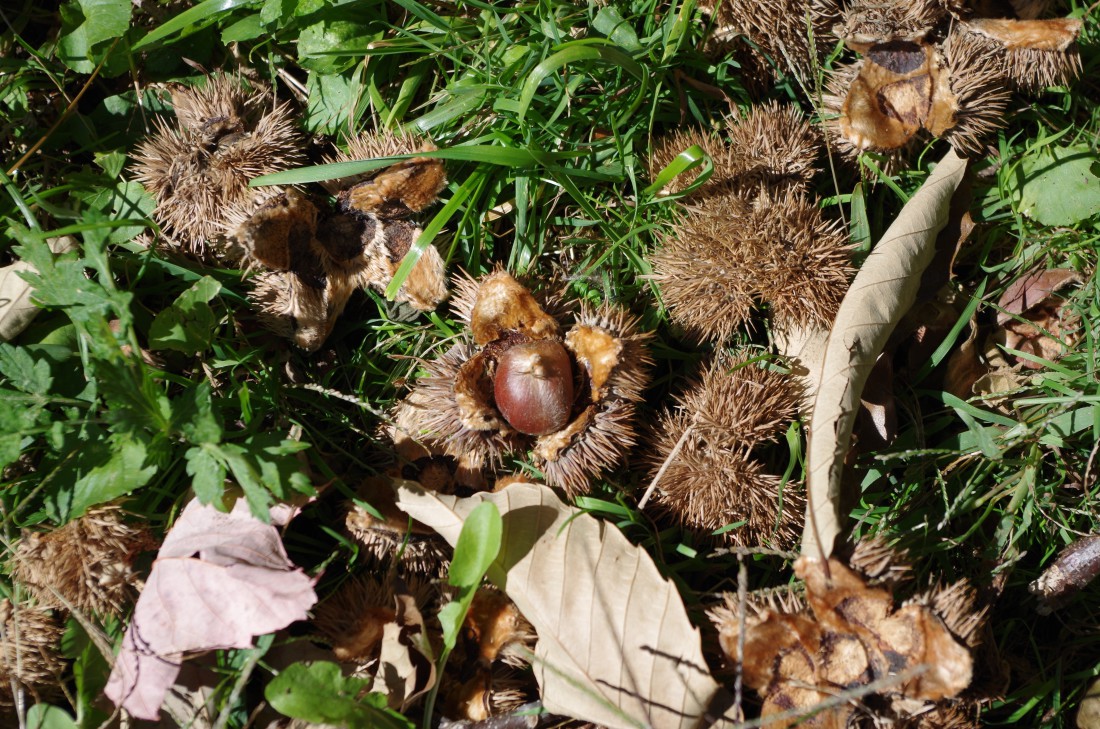Paul Dillman of Qualla Boundary makes traditional Cherokee chestnut bread. But he says he’s never tasted an American chestnut.
I met Dillman at Jay Huskey‘s Cherokee Food Booth at the annual Cherokee Indian Fair, where he was preparing Indian dinners: green beans, fried cabbage, fried potatoes, fatback and grease, fried pork chops and the customer’s choice of bean bread or chestnut bread. Dillman’s mother, Sue Owle, ran Boundary Tree restaurant in Cherokee from 1967-77, and growing up he learned Cherokee cooking from the older Indian women who worked there.
Chestnut bread is a variation of bean bread, a traditional staple food among the Cherokee. It’s prepared much the same way, just substituting chestnuts for pinto beans. Dillman calls the bread a “grease delivery system.” He prefers it with butter, but “around here,” he says, “bacon grease is king.”
To make the bread, Dillman boils chestnuts, which are usually stored frozen to prevent weevils, then caramelizes them and mixes them with stoneground cornmeal and a little baking soda (traditionally wood ashes) and flour to form a a paste. He wraps the paste in cornhusks and seals them, then boils them for an hour. He then unwraps the husks and cuts the bread into slices, slathering each with fatback grease and sometimes sautéing some of the grease off to give the bread a little crispiness before sending it on its way.
The American chestnuts (Castanea dentata) that formerly served as the base for this dish were largely wiped out by the chestnut blight, Cryphonectria parasitica, a pathogenic fungus brought to this country by imported Asian chestnuts in the late 19th century. The chestnut had been a prized lumber wood and was once a major part of the Appalachian forest canopy, but by 1940, the blight left the species on the brink of extinction.
Dillman uses Chinese chestnuts (Castanea mollissima) in his chestnut bread, which he says are larger than the American variety. He tries to get wild-picked rather than farmed nuts, both for taste to be able to save and reuse the flavorful water from boiling the chestnuts without worrying about, as he puts it, “bug spray.”
Dillman may never have tasted an American chestnut, but C. dentata does still exist in these parts, in the form of stump sprouts that sometimes grow up to 30 feet tall. Paul Gallimore, founder and director of the Long Branch Environmental Education Center in Leicester, explains that these American chestnuts can even make seed, but ultimately almost all of the trees perish due to the blight.

Gallimore has been involved in fighting for American chestnut restoration for over 35 years. At Long Branch, he keeps a nursery of backcrossed chestnuts, which are genetically 75 percent Chinese and 25 percent American.
On a recent visit, we walk around examining the dropped spiny and extremely sharp burs beneath the trees, in search of any chestnuts that have not already been discovered by squirrels, raccoons, opossums, skunks and the like. “Small mammals are happy to beat us to the chestnuts every year,” he says, “so we have to be after them early and often.”
I prick myself just gently picking one of the burs off the ground. Gallimore is quick to point to the ingenuity of Mother Nature in protecting its seed. Imagine walking around barefoot on that, he says. Or putting your lips and tongue on it to try to get the chestnuts out.
We finally find a chestnut, and Gallimore takes out his pocketknife to scrape away the inner skin before letting me taste the nut. Starchy and sweet, it tastes more like a carrot than a walnut.
“People are often surprised at how sweet the nut is,” Gallimore says. “To me, that flavor, you could put ’em in with anything.” He says he’s run chestnuts through the coffee grinder to mix with stir-frys and soups, but his favorite way to eat them is raw.
Arriving in this area in a school bus in the early 1970s, drawn to the abundance of green they saw on the map, Paul and his wife, Pat Gallimore, started out with 150 acres in Leicester and now protect over 1,400 acres as ecological sanctuary and wildlife preserve.
After starting Long Branch Environmental Education Center in 1974, their first project was an edible food forest, including apples, plums, peaches, pears, cherries, nectarines and hardy almonds. As the Gallimores found out about chestnuts, they brought them in as well.
Filling the gap left by the American chestnuts, acorns of oak trees replaced chestnuts as a food source for animals who once relied on chestnuts. Now, sudden oak death, as well as human pollution, is threatening our oak trees, says Gallimore. And if we lose our oaks, there is nothing else in the wings to replace that food source. So, he says, “It’s do or die time.”
Long Branch is home to hundreds of chestnut trees, and Gallimore encourages folks to come take some of the young backcrossed hybrids — for a donation — to plant on their own property. He also wants to get more of the hybrids to state and national forests to encourage cross-pollination between the backcrossed and 100 percent American varieties.
Visitors are welcomed at Long Branch, but Gallimore appreciates a call or email first. For details, visit longbrancheec.org.
A version of this story was originally published at earthflavors.net.



I would love to have a couple of these trees on my place . I found several chestnut trees in South Alabama and got a huge bag full of the nuts , but I couldn’t get a tree . I have pecan , plum and peach trees and 2 blueberry bushes . I planted 3 hazelnut trees but something are them to the root and I haven’t found anymore yet . I’m of Blackfoot ancestors.